As sky-high property values shrink our lot sizes and climate change shrinks our water supply, we are often tasked with methods to provide the necessary vertical structure that a garden needs that won't use too much water or create maintenance issues down the road. This week, Homestead’s lead designer, Christian Cobbs shares a few of his favorite drought tolerant trees for the landscape.
Often we need to create some screening, sometimes we need some shade, and other times we want some pretty flowers and some fall color. Luckily this can all be had without shading your entire lot, allowing all your fun sun-loving succulents and natives to flourish as well. Here are 5 examples of great structurak trees that won’t be a maintenance burden, or a burden on you water needs.
Cercis canadensis 'Forest Pansy'
There's a lot to love about this eastern North American native tree. It has fabulous, heart shaped burgundy foliage, a late winter/early spring flush of bright pink, pea-shaped flowers festoon bare branches, and it turns out some pretty decent fall color as well. The cercis canadensis grows to 20' x 20', and is adaptable to most garden conditions and makes a great sub for a burgundy Japanese Maple where something more drought and sun tolerant is needed. The ‘Forest Pansy’ is versatile enough to look fantastic amongst natives and a blues, purple, greys and silvers palette; massed out amongst a meadow planting where its foliage really pops amid the grassy textures and tones; and it also looks nice with modern eclectic gardens with your succulents, Kangaroo Paws, and cycads. The ‘Forest Pansy’ is a low water tree for any garden.
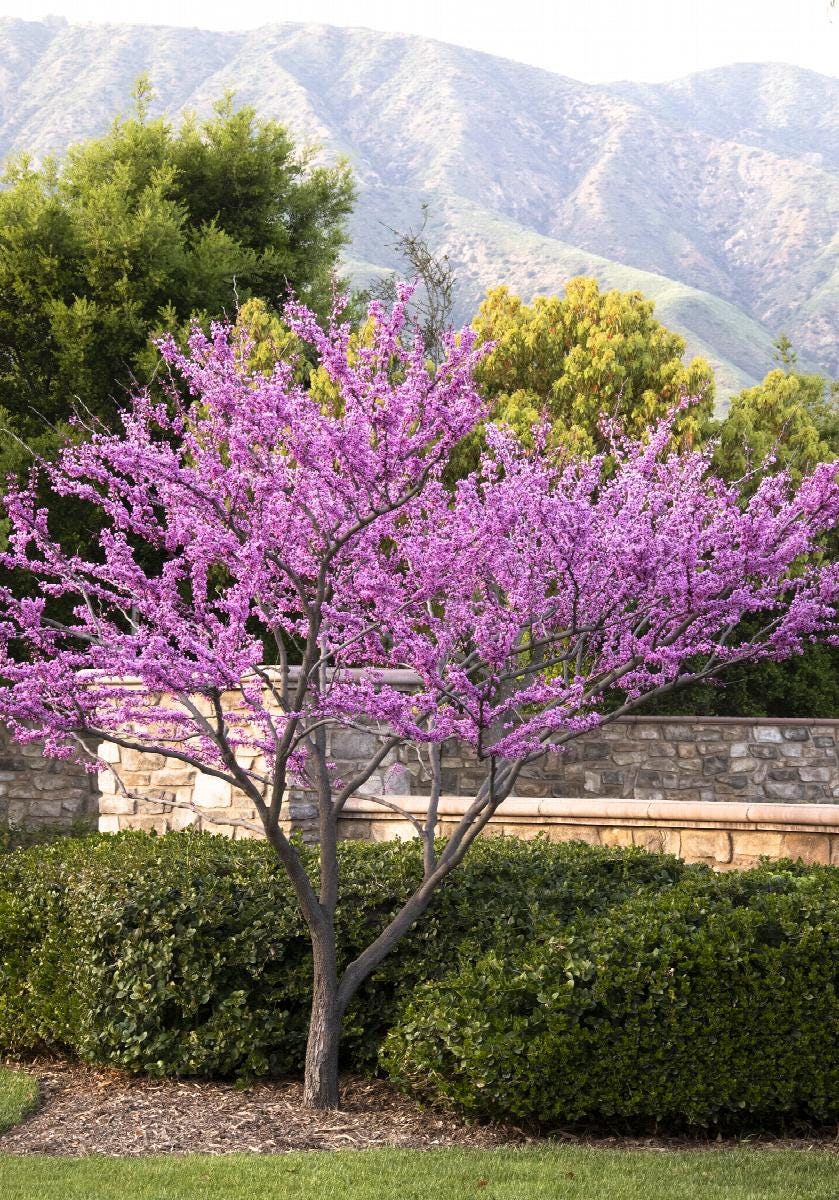
Acacia cognata
We use many species of Acacia in the garden, but Acacia cognata is one that's on constant repeat for us. For all intents and purposes, it is like a miniature weeping willow. Beautiful, bright green foliage is slender and sickle-shaped, deer tolerant and evergreen. Acacia Cognata grows to a perfect 20-25' x 20-25' and is a great tree if you are on a budget, as it grows quickly to form a beautiful, wispy canopy for screening purposes. This acacia tolerates pruning to keep its size in check, and you can thin out the canopy if you desire a less dense and more lacy effect. It also integrates nicely with any sort of modern garden application, particularly gardens with lots of succulents, where the textures can contrast, or amongst drought tolerant grasses and restios where the textures complement each other. Acacia cognata will tolerate partial shade, but is happiest in full sun and is hardy to the low 20s. Another extremely versatile low water tree!
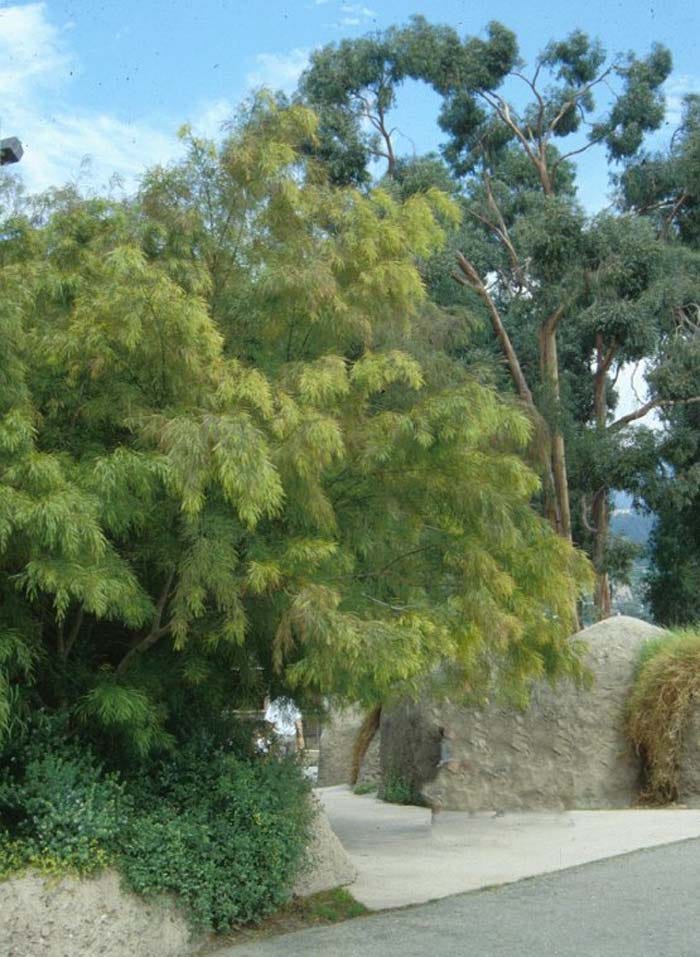
Leptospermum 'Dark Shadows'
Sort of like if the two trees above had a baby, the leptospermum ‘Dark Shadows’ is a fast grower to about 15-20' x 15-20' with willowy, evergreen foliage that is a deep coppery, burgundy color. Give it full sun to look its best and while it does sport attractive white flowers that are typical of tea trees, the foliage is really why it is grown. Leptospermum is tolerant of both inland and coastal locations and is not bothered by deer, it also is tolerant of most soils, and is hardy to about 20 degrees. You can use this tree in a similar manner you would use the Acacia cognata...just when you want something burgundy and not green.
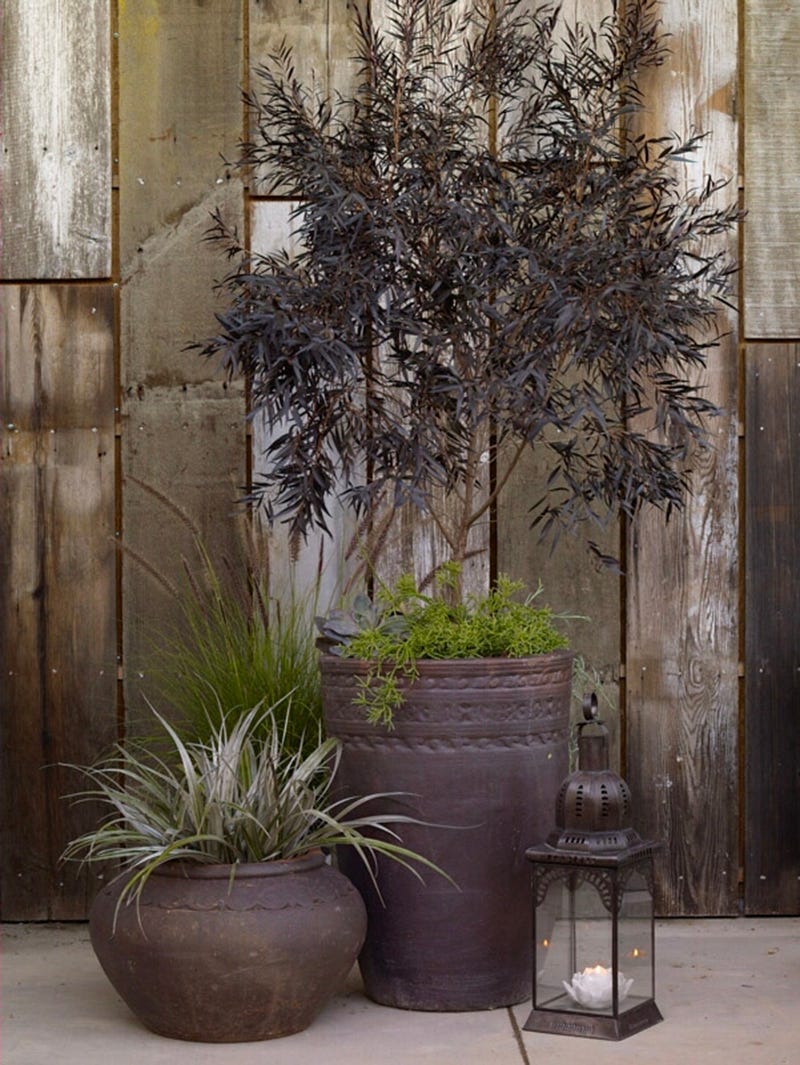
Olea europaea
We'd be remiss to not mention the olive. The olive tree is one of the most beloved trees in the world. It is drought and cold tolerant. It is not fussy about soil. It tolerates heat and fog alike. As an Edible/harvestable plant, the olive is a cornerstone of our business. We often have clients asking for fruiting varieties for their landscape, but we always like to make sure these are placed away from paved areas, as they can be quite messy. They grow to about 25' x 25', but tolerate hard pruning VERY well, so keeping them within bounds is easy. Evergreen foliage is, well, olive green to greyish, lending a cooling effect to a sun-drenched landscape. Olives are often sold in multi trunk and standard form. We prefer the classic multi trunk form as they lend themselves stylistically, to pretty much any type of garden. Olives work well in modern, classic, and formal applications alike. Put it with your lavenders, put it with your natives, put it with your succulents, put it wherever you want!

Maytenus boaria
The Mayten Tree is native to the waterways in the arid regions of Chile, which gives it that oh-so-desirable trait of being able to tolerate dry and wet conditions.....useful in transitional spaces in the garden. The mayten is frequently planted as a street tree in San Francisco where it is used as a substitute for Weeping Willow due its non-invasive roots and more water-thrifty nature. The deep green, shiny, evergreen foliage of this tree works amongst Hydrangeas, Roses, Ferns and other sort of cottage or woodland garden schemes if that is more your jam. We much prefer the 'Green Showers' variety over the straight species because of its lusher, larger leaves creating a fuller, denser look. *NB* in nature, this tree tends to form thickets. In gardens, that means that it has a tendency to sucker, and those suckers should be removed to maintain tidyness. It is best to not plant delicate, little perennials too close to the base, or else you could be ripping them out of the ground when you remove the suckers. The mayten tree only needs to be thinned occasionally, and hates to be hard pruned. Hardy to about 15-20 degrees, we have had success planting this tree in most Bay Area gardens.
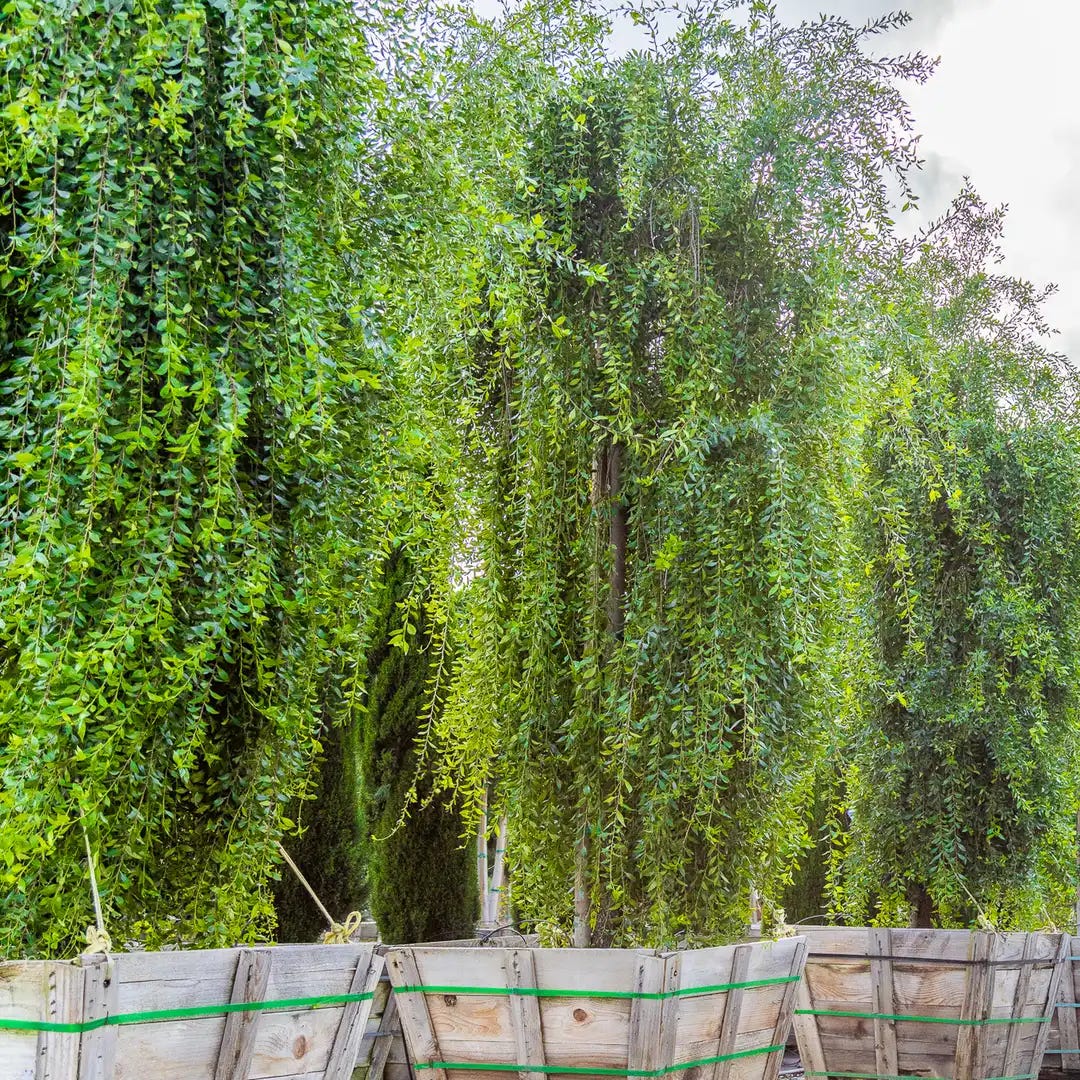
These trees are winners in the modern water conscious Bay Area garden. They check all of the boxes and their versatility allows them to create privacy and shade in a full range of Bay Area gardens, from the smaller city lot to the expansive Contra Costa hillside. Problem Solved!
Upcoming Events
November 9th Soulfood Farms- Vacaville, Ca. The Italian Garden. We will hold our class in the middle of the olive orchards dripping with olives on the cusp of being harvested. The class will include an Italian farm lunch eaten in the orchard. The Italian landscape will be translated into the California vernacular inspiring the Italian life into a Californian slant.
November 13th A Writer’s Garden Literary Symposium - Dallas, Texas
2025 Classes
February 27th & March 29th, 2025 Grow Your Own Salad -Lafayette, Ca
Ever dreamt of savoring a fresh, crisp salad made from your own garden? Join us for our "Grow Your Own Salad" hands-on workshop where you will learn the process of growing and harvesting salad greens.
In this interactive class, you'll dive into the essentials of growing a vibrant salad garden. You will learn through each step of the process, from planting to harvesting. Learn how to select the best salad greens for our climate, prepare your soil, and nurture your plants to ensure a bountiful harvest. We’ll cover essential tips on watering, weeding, and organic pest control, giving you the tools to cultivate a thriving salad garden.
At the end of the class we will create a delicious, fresh salad together, allowing you to enjoy what a local, home grown salad embodies.
April 10 Herbal Magic: Cultivating Culinary & Medicinal Plants - Lafayette, Ca
Join Stefani Bittner and fellow Ten Speed Press author, Penny Barthel in a four class series on growing culinary and medicinal herbs, including cannabis, in the garden. These two master plantswomen and expert gardeners will take you through every season in the herb garden, from seed planting to salve making and every step in between.
May 22 Summer Herbs & Cannabis: Companion Planting and Care - Lafayette, Ca
Dive into the world of synergistic gardening with our specialized class, "Summer Herbs & Cannabis: Companion Planting and Care." This class is designed for gardeners looking to optimize their green spaces through the art of companion planting, focusing on the harmonious cultivation of annual and perennial herbs, including cannabis. You’ll be equipped with the skills to create a thriving garden that leverages the natural benefits of plant relationships.
September 18 Harvesting Excellence: Final Care for Herbs and Cannabis - Lafayette, Ca
This hands-on course is designed for gardeners who want to master the final stages of the growing cycle, ensuring that their herbs and cannabis are harvested and processed with precision and care.
November 13 Kitchen Alchemy with Herbs and Cannabis - Lafayette, Ca
Join Penny and Stefani in the kitchen as we use the bounty of the garden in bespoke creations in the kitchen. This is what the summer herb garden was heading for all season! We become kitchen alchemists as we transform our harvested herbs into tisane, tincture, infused oil, salve, and delicious beverages and edibles. Penny will offer instruction on the unique properties of cannabis for health and wellness as we include it in the herbal ingredients in our creations. Come prepared to learn by doing as we make several favorite herbal recipes for mind, body and soul.

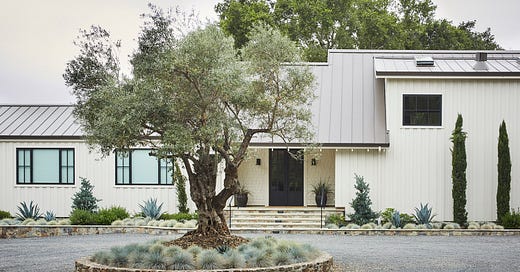


Hoping to plant a carob tree in our garden in Zakynthos, Greece, next year (more native in Cyrus I think).
Hi! I have a mature Eastern Redbud Cercis ‘Forest Pansy’ in Pleasant Hill. It is lovely and we do get a lot of compliments, but it requires a lot of water otherwise the leaves are small and cupped. Also the purple color fades quickly to greenish in late spring once it gets warm. The western redbud is more forgiving and appropriate for our Mediterranean climate.